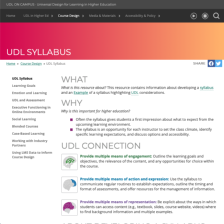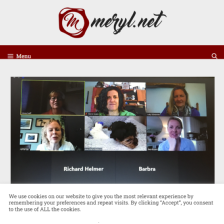Tools
Resources | |
|---|---|
Created by email marketing company Litmus, this 34-page guide covers many aspects of email accessibility. Topics covered include ensuring an email is easily readable, creating structure, utilizing effective layouts, and adding alt text. This guide also offers an overview of assistive technology and the importance of accessibility.
This resource provides a list of ten strategies that deaf and hard-of-hearing students would like teachers to use in the classroom to improve access to learning. The following are examples of the strategies included: don't use words like "this" and "that" as referents in the class or lab, treat all students equally, have a positive/flexible...
This webpage, from the National Center on Accessible Education Materials, provides information for instructors on how to create high-quality videos that engage learners and support understanding. Lighting, sound and other aspects of creating videos for instruction are discussed in these resources. Content is available in multiple formats for...
This three-page article from CAST discusses Universal Design Learning and the Learning Brain. Cognitive neuroscience research on how the brain functions informs UDL framework, which emphasizes the variability in brain structure and learning patterns. This framework acknowledges high variability in engagement (the why of learning), representation...
This webpage provides resources for developing a syllabus that follows the Universal Design for Learning (UDL) principles. UDL is "an educational framework that guides the design of learning goals, materials, methods, and assessments as well as the policies surrounding these curricular elements with the diversity of learners in mind." A syllabus...
This webpage, from the National Deaf Center on Postsecondary Outcomes, provides a 2-page tip sheet that covers Universal Design for Learning (UDL). This resource includes short overviews of UDL principles, how UDL applies to the classroom, how UDL can be incorporated, and how UDL works with ADA accommodations. Related resources and references are...
This article provides an overview of Universal Design for Learning (UDL). In the article, Allison Posey defines UDL, highlights its application for different learning environments, outlines the three principles of UDL, describes the types of support that families can provide at home, and explores how educators can use UDL for distance learning. A...
This webpage, from the DO-IT (Disabilities, Opportunities, Internetworking, and Technology) website, provides information about Universal Design of Instruction (UDI), including a definition, principles, guidelines, and examples. The definition of UDI "... is the design of teaching and learning products and environments to be usable by all people,...
This guide from deaf digital marketer Meryl Evans covers different automatic captioning tools that can be used in real-time for making video calls accessible on different platforms. Evans provides guidelines for readability, caption placement, and synchronization of automatic captions, as well as tips to overcome other accessibility challenges. The...
This tip sheet, published by the Internet Scout Research Group, provides guidance for employers on making their workplaces more accessible for deaf and hard-of-hearing employees. The article is divided into three areas: accommodations, safety, and additional resources. Technology; telecommunication services, devices, and interpreters; captioning;...
| |
| ← Previous | Next → |









